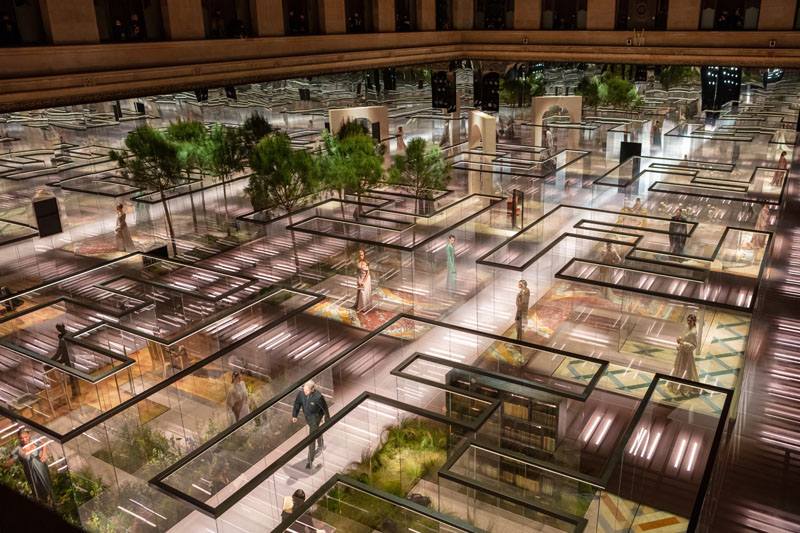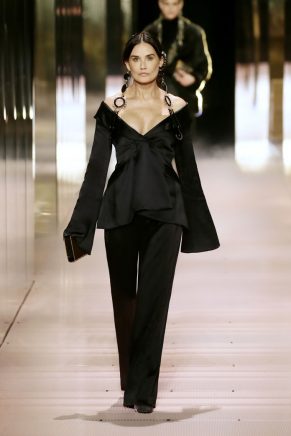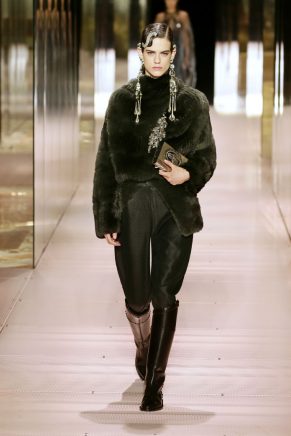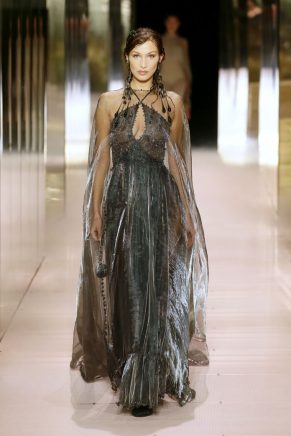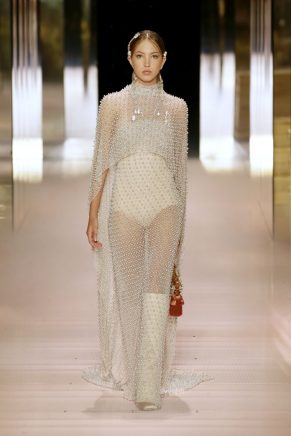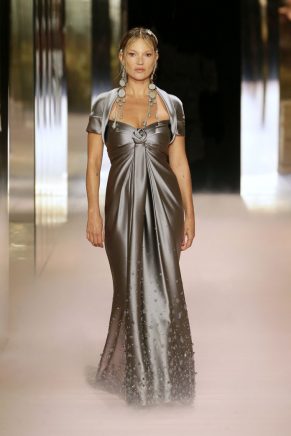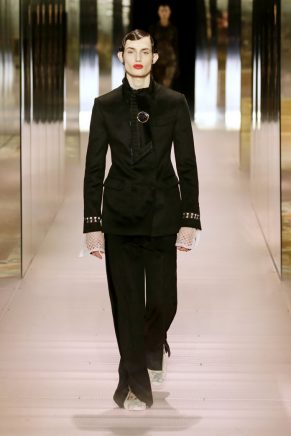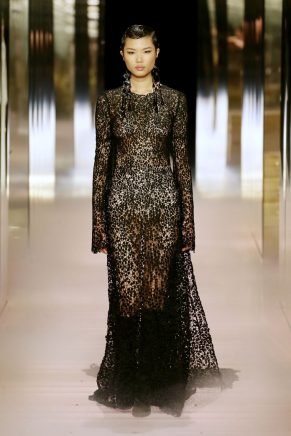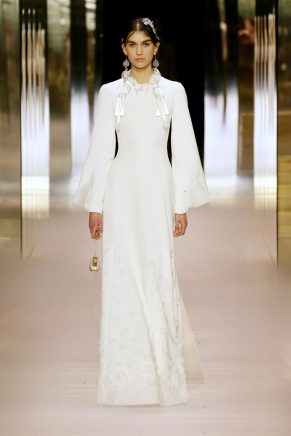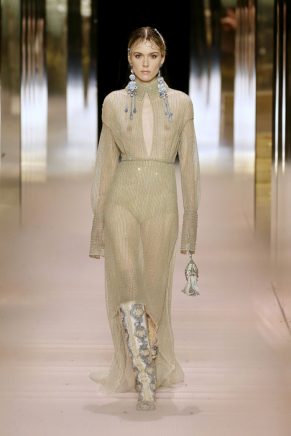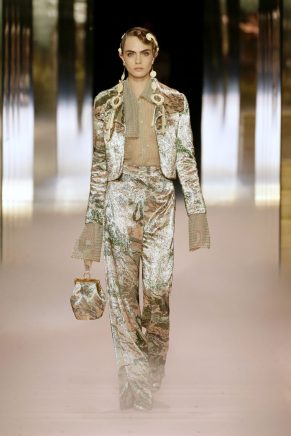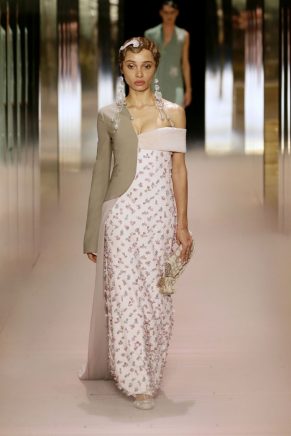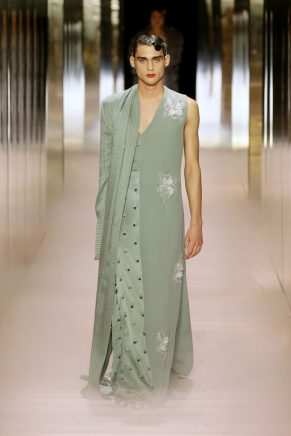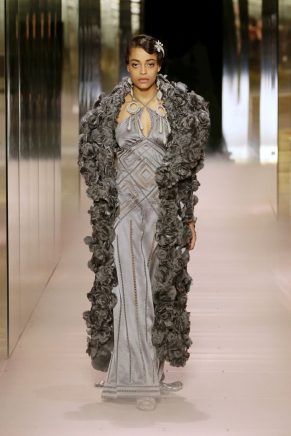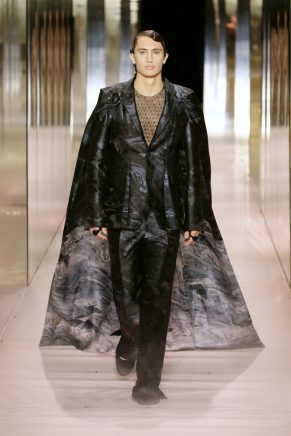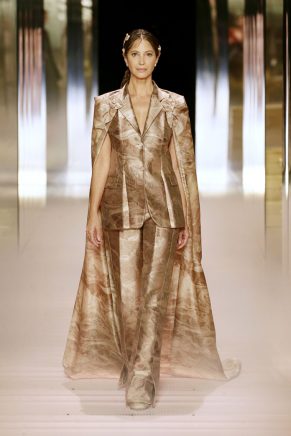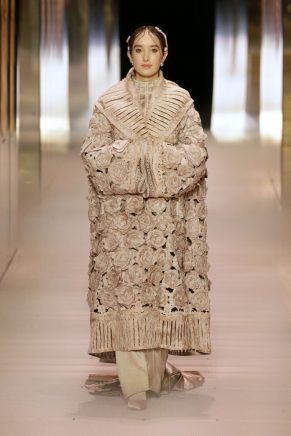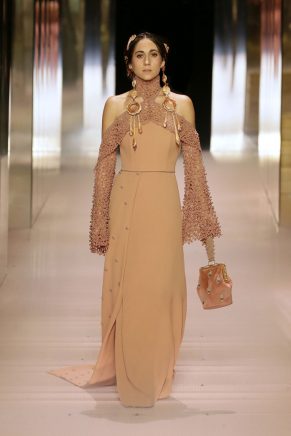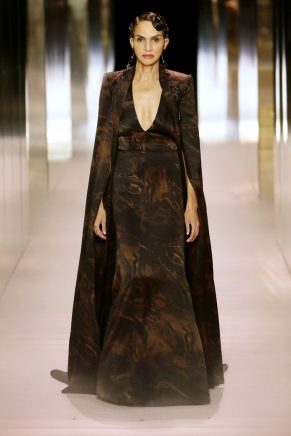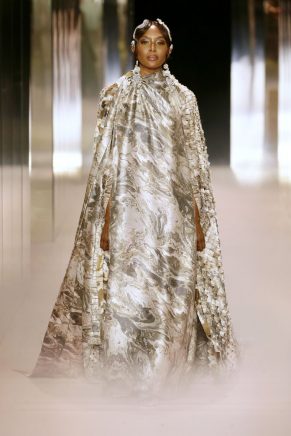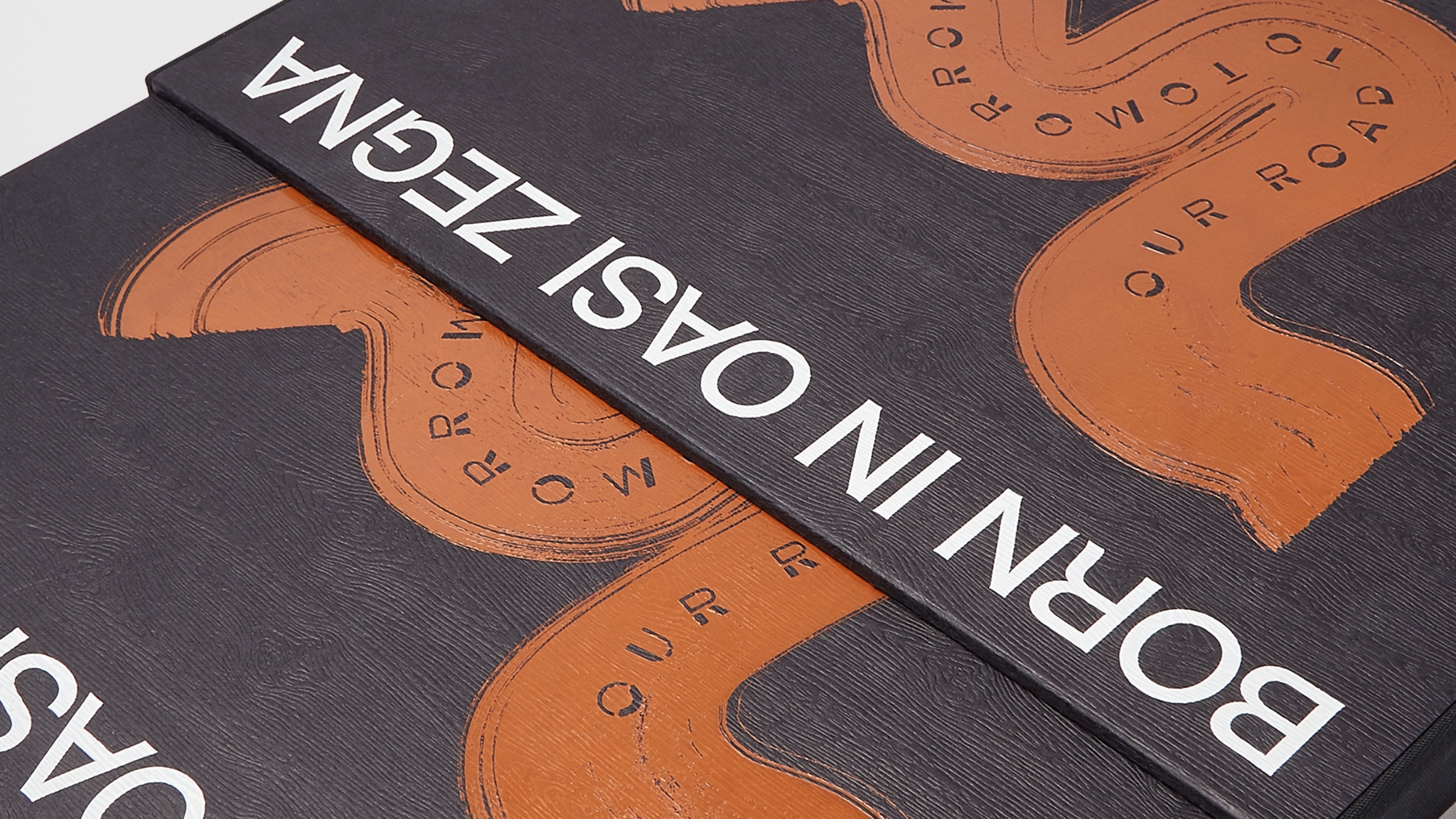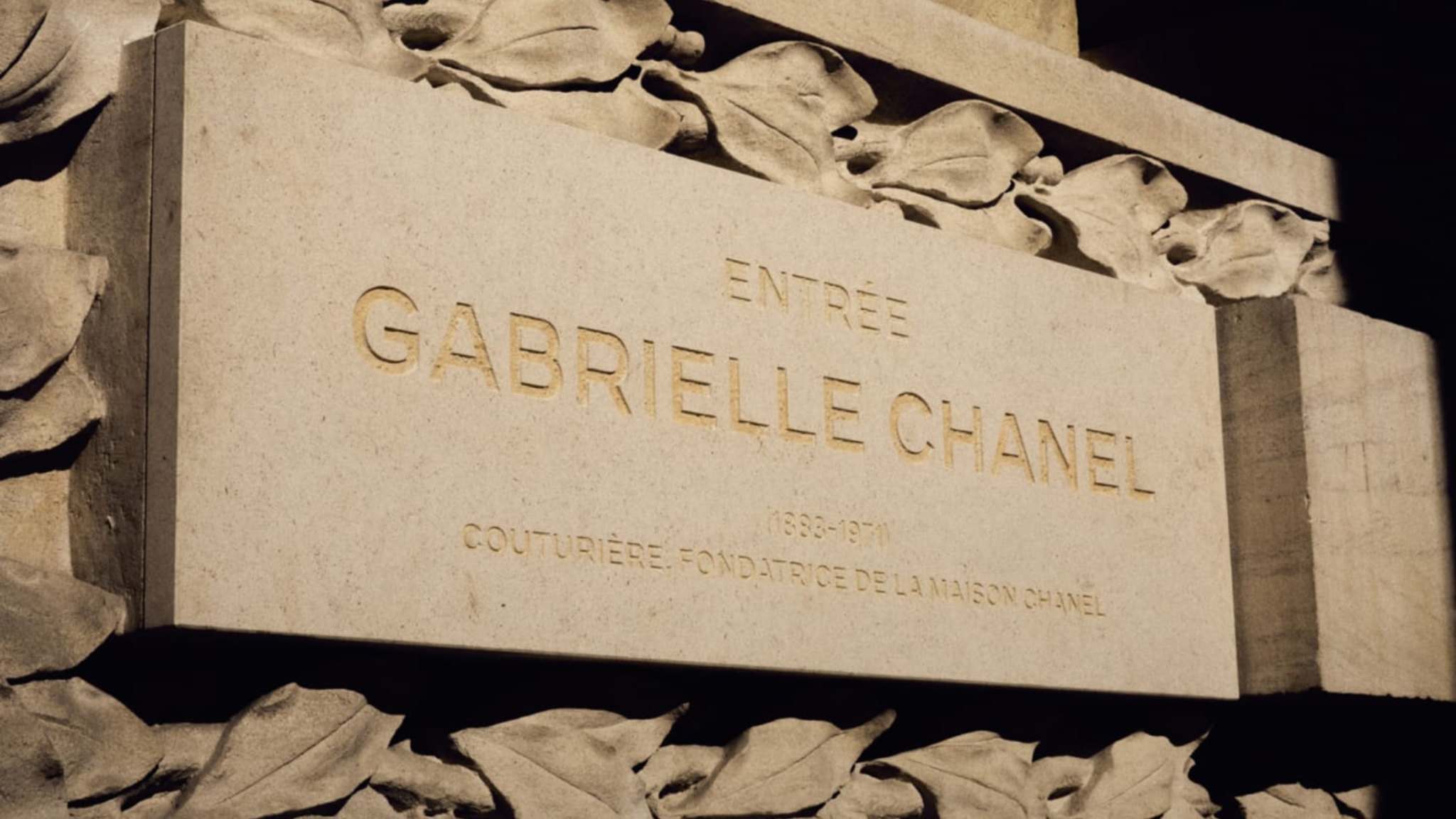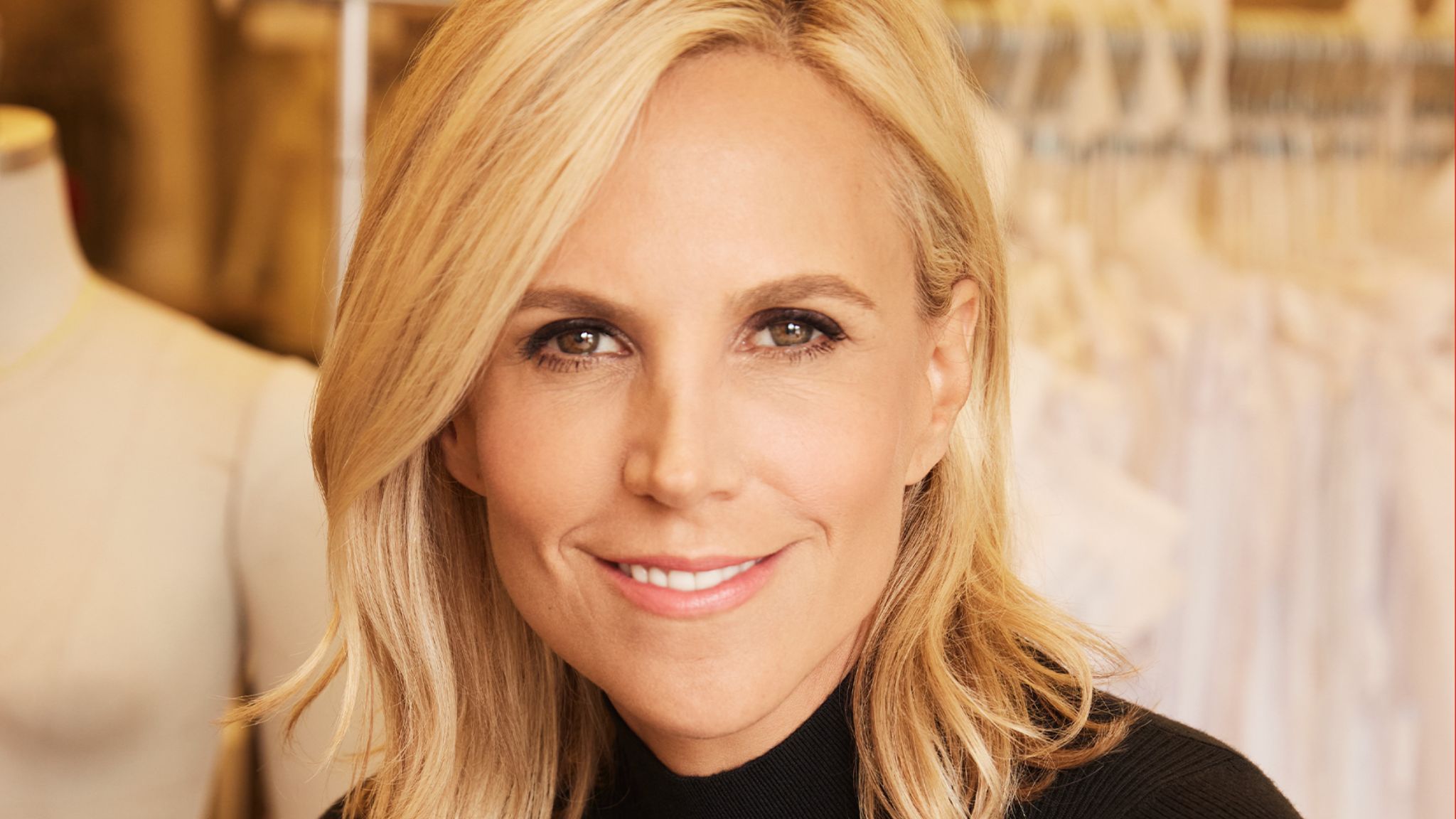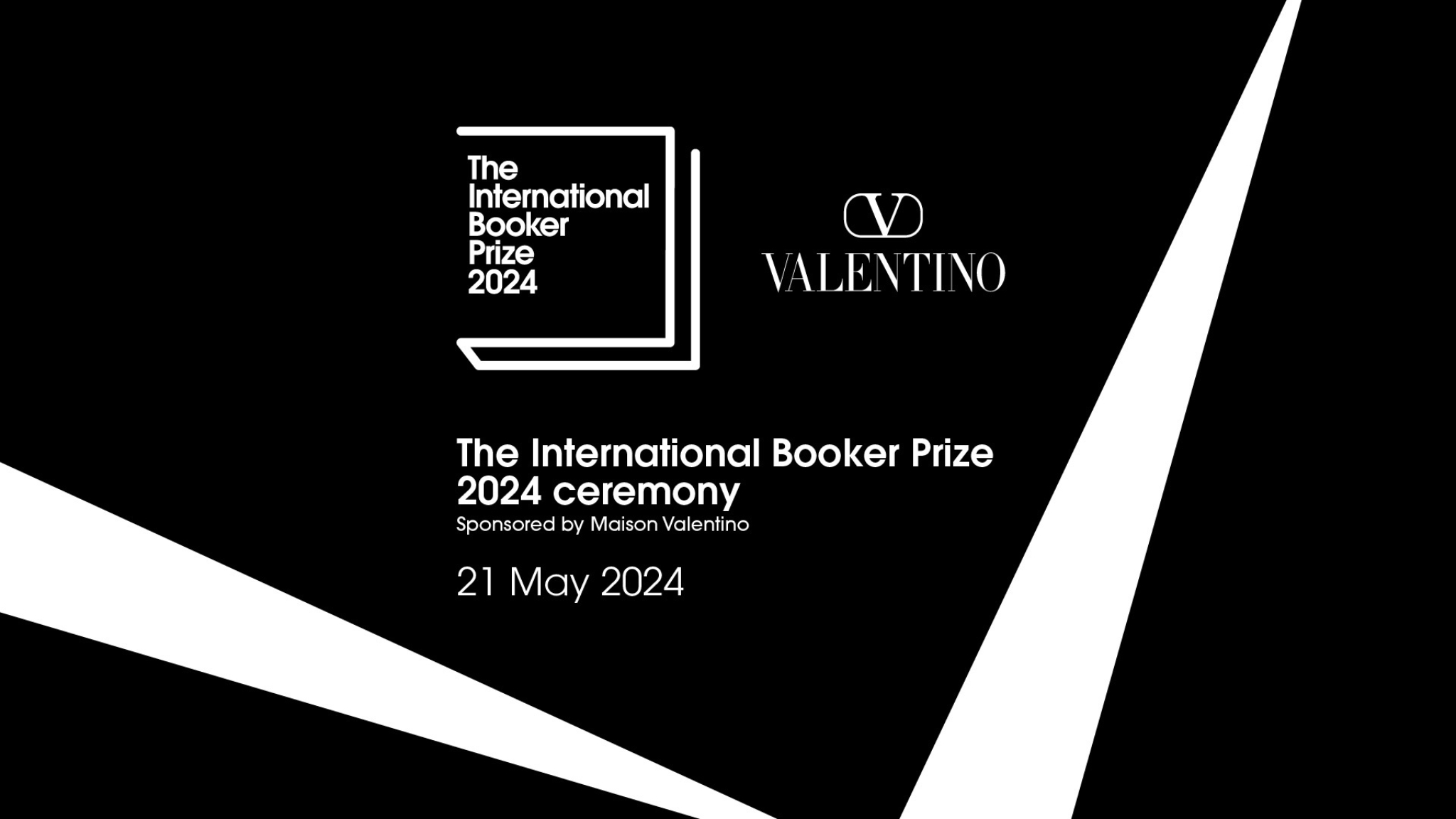Fendi Couture Spring/Summer 2021
Exhibition of Rare Books and Manuscripts
“Orlando, to whom fortune had given every gift, had only to open a book for the whole vast accumulation to turn to mist. So it was, and Orlando would sit by himself, reading.” – Virginia Woolf, Orlando Raised between the continent of Africa (in Kenya, Ethiopia, Tanzania and Botswana), London and Sussex, Kim Jones’ personal biography is inexorably interlinked – both by proximity and fascination – with the spirit of the Bloomsbury Group. From an upbringing spent a short distance from Virginia Woolf ’s home, Monk’s House, to after-school trips to sketch from the frescoes and furnishings which decorate the group’s communal habitat of Charleston Farmhouse, the spirit of Bloomsbury remained ever-present throughout Jones’ childhood, and inspired his most formative years.
Those early experiences have since evolved into a fixation with the creative set, whose aesthetics and philosophies are reflected within his debut collection for Fendi Couture. Alongside the show stands an exhibition of their books and ephemera, curated by Sammy Jay of Peter Harrington Rare Books.
The relationship between Virginia Woolf and Vita Sackville-West sits at the heart of the collection – both of books, and Fendi Couture. After falling in love with one another in 1922, only years before Fendi itself was founded, it was Sackville-West who went on to inspire Woolf ’s Orlando: the time-travelling, binary-blurring masterpiece which her son later referred to as “the longest and most charming love letter in literature, in which [ Virginia] explores Vita, weaves her in and out of the centuries, tosses her from one sex to the other, plays with her, dresses her in furs, lace and emeralds, teases her, flirts with her, drops a veil of mist around her.”
Within the exhibition sits the first ever copy of Orlando read by Sackville-West, specially bound with her initials stamped in gold and inscribed by Woolf: “Mrs Harold Nicolson is the ‘Orlando’ of Miss Rebecca West’s remarkable book of that name.” Their love letters to one another, since collated, published, and now read aloud by Fendi friends and family throughout Max Richter’s composition for the show, document Sackville-West’s reflections thus on the text: “I can’t say anything except that I am completely dazzled, bewitched, enchanted, under a spell.”
Although, to quote the novel, “Orlando naturally loved solitary spaces, vast views, and to feel himself for ever and ever and ever alone”, Vita’s copy finds itself in fitting company alongside other exceptional first editions of the book, including that presented by Woolf to Noel Coward. Elsewhere, the entirely blank pages of the mock-up copy of To The Lighthouse – gifted by Virginia to Vita – are wittily inscribed with a foreword: “In my opinion the best novel I have ever written.”
A cabinet curated in tribute to Virginia’s sister, the artist Vanessa Bell, includes her own copies of Woolf ’s works alongside her watercolour designs for book covers and catalogues advertising works she made during trips to Rome alongside Duncan Grant. Another contains a trove of correspondence between Woolf and Bell’s husband, Clive Bell.
The works of Vita Sackville-West – an esteemed author in her own right – stand facing those of Woolf. Alongside signed or inscribed first editions appear unpublished manuscripts of short stories, and her original notebook for planning the gardens at Sissinghurst.
For visual impact, though, it is hard to beat the striking array of early books published by the Hogarth Press. These were hand-printed by Leonard and Virginia Woolf in small editions and bound in uniquely marbled or patterned paper covers. They include a rare first edition of T. S. Eliot’s The Waste Land, the bubbling blue of its cover reflecting the troubled waters of the poem within. The handcrafted magic of these spellbinding volumes continues to inspire today.
All these passionate lives, loves, and works are woven into the fabric of the Bloomsbury Group. The final cabinet in the exhibition, dedicated to nostalgia, pairs a rare copy of Euphrosyne, the Cambridge poetry anthology from 1905 which marks the very beginning of Bloomsbury, alongside another beginning – the brochure which Kim Jones kept after his very first visit to Charleston.
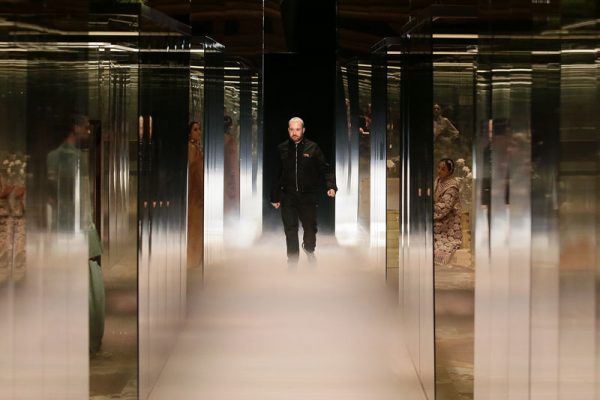
androginy artistic director bella hadid cara delevingne christy turlington demi moore fashion show FENDI fendi couture kate moss kim jones Naomi Campbell virginia woolf
